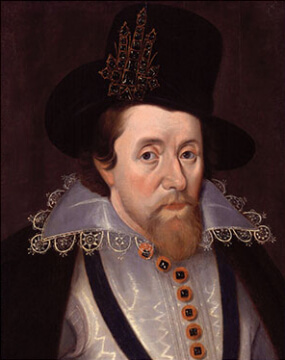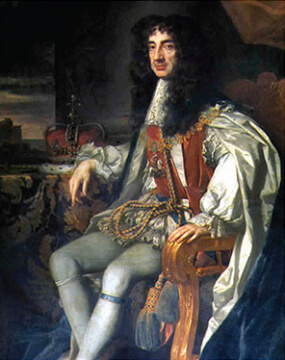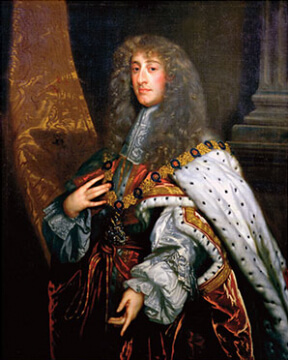Kings and Queens of England Part 1

James I (1566-1625)
Reign: 1603-1625
House: Stuart
- Born in Edinburgh Castle, he became King of Scotland at the age of one as James VI
- He was fluent in several languages and published works on political science, black magic and the dangers of tobacco
- Gold “unite” coins were first produced from 1604 to 1619; the name recognizes the first union of the kingdoms of England and Scotland

Charles II (1630-1685)
Reign: 1660-1685
House: Stuart
- He reinstated Christmas celebrations after being banned by the Puritan-dominated Parliament during the Protectorate
- His wife, Catherine of Braganza, introduced tea-drinking to England.
- The “guinea,” a quarter ounce gold coin, was produced beginning in 1663; the name comes from the region in Africa where the gold was mined.

Charles I (1600-1649)
Reign: 1625-1649
House: Stuart
- He is the only English monarch to be executed, for high treason in 1649
- A believer in the divine right of kings, he dissolved Parliament in 1629; the next eleven years are known as the period of “Personal Rule”
- French coin maker Nicholas Briot introduced the coining press to England, but resistance from the minting guild prevented complete adoption

James II (1633-1701)
Reign: 1685-1688
House: Stuart
- The Test Act of 1673 made it illegal for Catholics to hold public office, and James’ refusal to take the test outed his Catholicism to the public
- After losing the throne, King Louis XIV granted James asylum in France, where he lived his last 13 years
- He attempted to regain the throne by raising an army in Ireland in 1690, but was defeated in the Battle of the Boyne
Did You Know?
The word “quid” is commonly used today as a slang term for the British pound sterling, and is thought to have derived from the Latin phrase Quid Pro Quo (something for something). The written word first appeared in 1661 in the pamphlet Strange Newes from Bartholomew-fair.
 |
|
Click on the items in the case image below for an enhanced view
